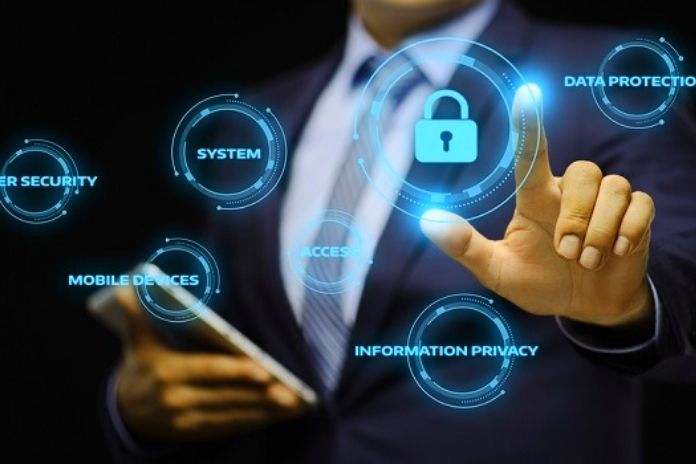Cybersecurity: With the increasing use of the Internet, substantial threats to data security have emerged – cyber attacks. This type of crime is becoming increasingly common, with sophisticated hackers using technology tools to break into confidential systems.
In this scenario, cybersecurity plays a central role. The concept, in general terms, refers to the implementation of policies, processes, technological tools and human resources to protect companies, their systems and confidential information from digital attacks.
What Is Cybersecurity?
In short, cybersecurity refers to the practice of protecting systems and confidential information from potential digital attacks. Also known as Information Technology (IT) security, cybersecurity-related measures are designed to combat digital threats against networked systems and applications. These threats can originate outside or even within a company.
Financial losses for companies include the expense of discovering and responding to data breaches, the cost of downtime, lost revenue, and damage to the brand’s long-term reputation.
Personal Information Targeted By Hackers
Among the main targets of hackers in cyberattacks are customers’ personal information such as names, addresses, identities and credit card numbers. With this information in hand, criminals can sell the data on shady digital markets, compromising consumer trust in the company, not to mention possible legal punishment for security breaches.
Against this backdrop, it’s no surprise that 88% of Board members rated cybersecurity as a business risk, according to a Gartner survey released in October 2021.
This is because companies are increasingly vulnerable to cyber threats from the context in which digital information and technology act inseparably from day-to-day work.
In addition, cyberattacks, which target both data and infrastructure, are becoming more sophisticated, following the technological evolutions that emerge each year.
Relationship Between Cybersecurity And Information Security
It is common to confuse the concept of cybersecurity with information security. After all, in general, both deal with the same topic: data and systems protection.
However, it can be said that cybersecurity is an information security arm dealing with defending infrastructures, programs and networks against virtual attacks in cyberspace. In turn, topics such as firewalls, antivirus and access control are still part of this umbrella.
In other words, cybersecurity is primarily focused on protecting digital data in apps, services and IT assets. At the same time, information security acts more broadly, dealing with security policies, risk assessment, crisis management, asset management, etc.
Types Of Cybersecurity
An effective cybersecurity strategy has multiple layers of protection so that companies can protect themselves from a range of cybercrimes.
These attacks aim to access, modify or destroy corporate data, such as obtaining information to extort money from customers or the organization. Among the most common cybersecurity genres are:
Network Security
It includes security measures to protect a computer network against potential intruders. This includes wired and Wi-Fi connections.
Network and perimeter security also demarcate the boundary between the company’s internal network (Intranet) and the external Internet. This way works to avoid vulnerabilities in connected systems, usually used by hackers as a “gateway”.
Application Security
This type of cybersecurity focuses on protecting data or code in applications, whether cloud-based or on-premises. App security protects information before and after apps are deployed.
Ideally, it should be incorporated into software still in the development phase, considering points such as the future treatment of data and user authentication.
Data Security
It covers all the tools and processes associated with protecting personal information assets. Data security methods include, for example, creating information backup and encryption, which ensures that sensitive information is preserved.
Cloud Security
This kind of cybersecurity encrypts data in the cloud – not just in storage but also in transit. That is when they enter or leave the cloud.
Cloud security also protects data in use (during processing) to ensure consumer protection, business requirements and any regulatory standards on information handling.
Endpoint Security
Terminals or endpoints are network-connected devices such as laptops, smartphones and servers. Endpoint security protects these assets from cyberattacks and, consequently, all data and information connected to them.
End-User Education
This cybersecurity branch invests in company-wide awareness to keep endpoints, such as notebooks and servers, safe.
End-user education can involve training to show how employees can delete suspicious email attachments, the importance of not using untrusted USB devices, and other initiatives. This is an essential point since training on dealing with sensitive data and systems can generate great results despite consisting of simple measures.
It is not by chance that people are considered the most fragile point in the cybersecurity chain. This makes professionals and employees, especially those with little visibility but multiple access to the company’s structure, real targets.
Disaster Recovery
Considered the last possible response, it comprises tools and procedures to act in response to events that were not planned. These include natural disasters, power outages or cybersecurity incidents.
In turn, the goal of this kind of cybersecurity is to act with minimal disruption to the company’s primary operations. Cloud recovery systems, automatic backups and redundancies are already used.
Also Read: Cybersecurity And The Growth Of IoT

